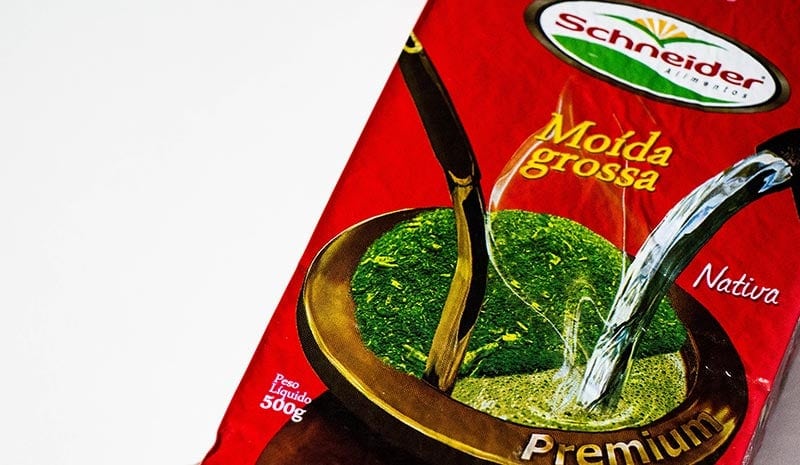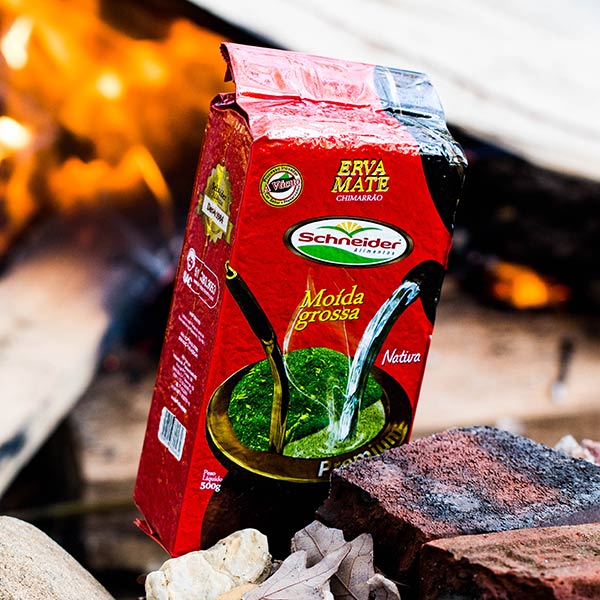Description
Malty Monstrosity
Cracking a brick of Schneider Medium, a world of malty richness is pierced. Dimensions of explicit robustness linger across palates, with subtle sweet molasses and brown sugar as sentinels maintaining the peace between light and darkness.



Additional information
Measures of Malta
Strong and rich malty green body with playful flouncy floral elements, Scheneider elegantly combines strength with finesses.
Harmony is achieved through a beautiful moída grossa cut (medium), with sophisticated layering of powder (simply called pó in Portuguese), to fine cut, to medium cut, to large cut leaves, with an addition of 30% stems (the general category of this cut is known as “PN-1”, but each producer expresses it slightly differently depending on the size of the leaves and stems, all while following the guidelines of 70% leaves and 30% stems).
Most ervateiras (erva mate farms / estates) in Brazil dry their erva with smoke produced from various woods, creating a distinct robustness of flavor. Some farms use a lot of smoke and produce an intense explosion of smoky flavors, while others have a lighter tough.

Schneider’s smokiness is easy and soft, which works to amplify the natural maltiness and center the floral notes, keeping the character of the yerba out of fruity Yacuy territory and firmly in the land of malty robustness with just a touch of lighter notes — a commendable feat, as it’s not always easy to retain the florals in this type of erva.
In the category of traditional robust moída grossa ervas, it’s hard to surpass Schneider. That’s the beauty of ervas: there are myriad sub-categories of cuts, types, aged vs non-aged, native plants vs commercial plants, etc… To say that one erva is better than another is comparing bombas to bombillas
The preference comes down to “what do you like in a strong erva?”, “what do you like in a soft, native chimarrão?”, “what do you like in a pure leaf erva (pura folha)?” And with the answers to these questions, you can easily end up with 20 “favorite” ervas, particularly if you’re a connoisseur.
Brands such as Schneider remind us of the blurring lines between all sorts of cuts and types, as you can now find “Argentine style” and “tereré style” ervas growing in Brazil and cut to produce “yerba” mate for export in the Paraguayan and Argentine markets. Heck, at this point, tereré is as much a part of certain regions of Central Brazil as it is in Paraguay (matte leão, helloooo).
And, as most of us already know, this blurring of lines has been done for the Uruguayan market since forever, as Brazil has been the grower of 99% of the entire Uruguayan market (read: the Brazilians are responsible for what I’ve been referring to as the “Gaucho” style of yerba, a la Canarias, Moncayo, Sara, Del Cebador, etc., all while clearly considering those brands “Uruguayan”, not Brazilian (despite being produced in Brazil).
Once you step down the rabbit hold of ervas and yerbas and chimas and tererés, there’s no climbing out, Materos! With that said, Schnerider is surely an experience well worth the travel if you can wrap your gourd around it. I warn you, it’s one of those elusive, hyperlocal brands that don’t have much of a desire for global expansion but happily provide the local market all the rich maltiness they can sip.

Serving notes
With good latitude, higher temperatures in the range of 175ºF, 79ºC suit this erva very well, maximizing the robustness. Try 160ºF, 71ºC range for less espresso and more milk chocolate.























